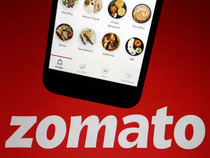NEW DELHI: Despite a 46 percent drop over its peak, analysts largely have a mixed view on whether

Kotak Institutional Equities, on the other hand, felt the recent sharp correction offers a buying opportunity. This domestic brokerage said that a sharp decline in the stock price of Zomato, which has fallen 27 percent over the past two trading sessions, seems to be tracking the decline in prices of global tech stocks, even as there is no change in fundamentals.
Data showed stock prices of food delivery stocks such as DoorDash are down 25 percent year-to-date. Delivery Hero is down 30.3 percent and Deliveroo has fallen 24.1 percent over this period.
Kotak said the Indian food delivery market has stabilized into a two-player market, with Zomato and Swiggy controlling almost all of it. Swiggy’s food delivery gross merchandise value (GMV) was $984 million in H1 2021. Zomato’s food delivery GMV over the same period was $1.05 billion, indicating some market share gain by Zomato over the period.
“While we don’t yet have data for periods subsequent to H1CY21, we note that no new competitor has entered the market and do not expect a marked difference in relative market shares in H2CY21,” Kotak said.
With $1.9 billion of cash as of September 2021, Zomato remains well-capitalized to fund its losses and carry out fresh investments in Grofers, Kotak said.
“We retain buy on the stock as we believe the food delivery business offers solid long-term growth potential. Cities with a higher density of restaurants are witnessing much better contribution margins than nascent cities; their relative mix may impact near-term margins although we retain our expectation of Zomato turning Ebitda breakeven by FY2025 adjusted for ESOP expense,” it said while suggesting a target of Rs 170.
JPMorgan is not too optimistic. While it suggests that the fall in the stock is led by macro factors that have driven a broader tech selloff globally, a reverse DCF suggests the stock is pricing in 12.2 percent WACC (weighted average cost of capital).
The weighted average cost of capital (WACC) is the rate that a company is expected to pay on average to all its security holders to finance its assets.
JPMorgan said Zomato’s sensitivity to WACC assumptions is sharper and said Zomato may have more downside scenarios than upsides, adding that it is too early to bottom fish.











